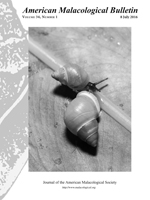Populations of Mytilus edulis complex were studied from 13 stations located at three areas of the Baltic Sea (the Gulf of Gdańsk, Poland; Tvärminne area, Finland; Trosa Archipelago, Sweden) and the Skagerrak sound (Kristineberg, Sweden). The main purpose of the study was to document the occurrence of intersexuality along longitudinal salinity change using squash and histology for comparative reasons. Intersex was identified in all four geographical areas at an average frequency of 1.8%. Squash technique revealed the highest intersex frequency in the Gulf of Gdańsk (up to 6.25%) whereas histology examination did so in the Kristineberg area (up to 10%). In the Tvärminne area and in the Trosa Archipelago the average frequency of intersex did not exceed 2% regardless of the technique used; this suggests a natural induction of the phenomenon. Statistically significant spatial differences in intersex frequency were confirmed for mussels inhabiting polluted hotspots in the Gulf of Gdańsk and at the west coast of Sweden (Kristineberg). Therefore, for these localities artificial induction of intersexuality as a consequence of adverse environmental threats (pollution, parasite outbreaks) is further suggested. Furthermore, squash technique - being less sensitive in identifying intersex when compared to histology - is not recommended for mussels with severe reproductive impairments making a proper analysis of gonads impossible. Intersexual individuals were also characterized by less developed gonads and lower gonado-somatic index (GSI) than males and females. Significantly lower GSI revealed less energy allocation towards reproduction in populations from the Trosa Archipelago and Tvärminne area in comparison to those from the Gulf of Gdańsk and from Kristineberg.
BioOne.org will be down briefly for maintenance on 17 December 2024 between 18:00-22:00 Pacific Time US. We apologize for any inconvenience.
How to translate text using browser tools
5 July 2016
Intersexuality in the Blue Mussel Mytilus edulis Complex (Mytilidae) from the Baltic Sea and the Danish Strait
Magda Dublinowska,
Katarzyna Smolarz,
Sandra Zabrzańska,
Josefine Larsson,
Natalia Czerniawska
ACCESS THE FULL ARTICLE

American Malacological Bulletin
Vol. 34 • No. 1
July 2016
Vol. 34 • No. 1
July 2016
gonad development
relative energy investment in reproduction
sexing




